"The murmur of a cool stream / bird song, ripe fruit in plenty / bright multicoloured tulips and fragrant roses..."
-Gulistan by Musharrifu'd-din Saadi
Tulips, the luscious and soft bulb flowers that grow in a variety of vibrant, fringed, and pastel colours with a sweet and fresh fragrance, it is no wonder that the tulip is everyone’s favourite spring flower. Growing in a cup or star shape, its flowers are generally large and mostly symmetrical, making for an extremely aesthetically pleasing flower. Whether grown or cut, tulips are beloved for their sturdy simplicity and colours. Give Gift Boutique Hong Kong has gathered all the interesting facts and history on the beloved tulip.
Scientific Information
Scientific Name: Tulipa
The tulip has more than 50 species but within that, there are more than 3,000 naturally occurring and genetically cultivated varieties of the flower as well. Further, the tulip is member of the lily family, Liliaceae.
Tulips are geophytes, meaning that they grow from winter-resistant bulbs that allow them to survive in dormancy during the colder months to then bloom again during the spring. A tulip bulb looks similar to an onion, though it is not recommended that the bulbs be eaten due possible unknown toxicities, even though the flower petals themselves are highly edible. Tulips can also be grown from seeds or micropropagation but require a substantial amount of time (1-8 years) before it reaches flowering size with these methods.
Most tulips are also perennials meaning that they generally grow back from the same bulb every year and depending on species, most tulips grow between 10-70 cm in height. Further, tulips are hermaphrodites, making it easy for the flowers to be pollinated.
Wild tulips thrive best in mountainous areas with temperate climates and are most often found in meadows and steppes but can also be found in fields, orchards, roadsides and more.
Origins and Naming
Tulips are native to Turkey and other parts of the Mediterranean. They grew wild among the Tian Shan Mountains and were first cultivated in Istanbul in 1055.
There is speculation about the origins of the tulip’s name, but it is believed to have been derived from the word turban due to the flower’s distinct shape. It is also possible that its name came about from an error in translation, as it was popular during the Ottoman Empire to wear tulips on turbans.
*Ottoman Turkish: tülbend ("muslin" or "gauze")
*Persian: دلبند delband ("turban")
Tulip then likely made its way into English as tulipa either through French, tulipe or tulipan or possibly through Latin, tulipa.
Tulip History
While tulips have been cultivated since the 10th century it found its fame beginning in the 15th century where tulips became the symbol of the Ottoman Empire and were considered one the most prized flowers. Once the tulip reached Europe, somewhere in the late 16th century, they spread rapidly and became a popular commodity.
By the 17th century, between 1634 and 1637, tulip mania or fever had taken hold in the Netherlands. The tulip became so immensely popular and expensive that they were used as a form of currency and caused the collapse of Netherland’s market. One variety of tulip, the Semper Augustus, was so rare and valuable that it cost as much as a house before the market collapsed.
Since tulip mania, the tulip has since become associated closely with the Netherlands and the country is still the world’s biggest market for tulips. Holland hosts the world’s largest display of tulips at the Keukenhof Garden.
Tulip Colours
One of the reasons tulips are so popular is because of its expansive colour variety. Its history of cultivation has produced tulips in nearly every colour of the rainbow. Tulips can come in a single colour or multiple tones in one single bloom. The black tulip is often considered the rarest, though its colour is usually closer to a deep purple shade of eggplant than true black.
*White
*Cream
*Yellow
*Orange
*Red
*Peach
*Pink
*Purple
*Maroon
*Green
*Variegated
Common Tulip Types
There are around 3,000 currently registered tulip varieties. Here are a few of the most popular and interesting varieties of tulips.
Single late
Also called the Cottage or Mayflowering tulip, this is the most recognisable tulip with its cup-shaped bloom. It comes in the widest range of colours and is one of the tallest varieties, averaging between 18-30 inches in height. These tulips do well in warmer climates and are one of the most popular cut varieties of tulips due to their long stems and long-lasting blooms.
Darwin hybrid
Another popular cut tulip variety is the Darwin hybrid, it is a cross between a Fosteriana and late-blooming tulip. It has long and sturdy stems with big blooms that are pyramid in shape. The flower often grows in vibrant multi-tonal red and orange colours create a striking appearance.
Double early and Double late
The double in this variety of tulip refers to its multi-layer bloom that is often compared to a peony. This variety of tulip can grow both late and early during its spring growing season, giving it the capacity to have them grow twice in one season. Its flowers are very large, around six inches in size, with long stems to support them.
Triumph
A cross between a Single Early and Darwin variety, the Triumph tulips are touted as having a long vase life with a sweet scent and a perfect cup-shaped bloom. It is also able to withstand colder growing temperatures than other varieties of tulips and it is known to come in lovely colours and shades.
Rembrandt
The closet variety to the infamous Semper Augustus of the famed tulip mania that took place in the 17th in the Netherlands, it is named after the famous painter. While this version of the tulip does not carry the same virus that made the Semper Augustus so famous its appearance is just as striking. This tulip is best known for its streaked colour, often in red, flame or purple colours. Due to its varying mutations, the Rembrandt flower can come in different shapes, stem heights and having varying blooming times.
Species
This is a wild variety of tulip and is believed to be the descendants of the very first varieties of tulips. While this variety tends to grow smaller than other types of tulips, both in height (3-8 inches) and in bloom, they’re a very sturdy plant and a reliable perennial making it popular with gardeners.
Kaufmanniana
Native to Turkenstan, the Kaufmanniana is a hybrid that is best known for their water lily-like appearance with its pointed petals that open flat in bright sunlight. The flowers can bloom up to 8 inches across with stunning colour variation. This variety blooms early in the season but grows much shorter than other varieties, around 4-6 inches.
Parrot
With its feathered petals that come in spectacular colours, it is no surprise that this tulip variety is called the parrot. Its flowers are large and cup-shaped with fringed or feathered edges that come in a mix of red, pink, orange, yellow, purple, green, and white making for an extremely eye-catching flower.
Tulip Symbolism and Meaning
As tulips are so beloved, they have a variety of meanings in different places around the world as well as different colour interpretations.
n general, tulips have become the symbol of perfect love. This meaning was said to have derived from Turkish and Persian legends about the love between a Farhad and a Shirin. Further, at times within Turkish culture, the tulip took on almost a divine status and was used as a symbol of paradise on earth.
Other Tulip Meanings:
*The Netherlands have used the tulip to represent the briefness of life.
*For Christians, the tulip symbolizes passion, belief and love.
*Victorians often associated tulips with charity.
*As tulips are often the first to bloom in spring, they can also symbolise rebirth
*Tulips are the eleventh wedding anniversary flower and symbolize devotion and love.
Tulip Meanings by Colour:
*Pink tulips symbolize happiness and confidence.
*Purple tulips symbolize royalty.
*Yellow tulips symbolize cheerful thoughts and sunshine.
*White tulips symbolize forgiveness or worthiness.
*Red tulips symbolize true love.
*Variegated tulips represent beautiful eyes.
*Black tulips symbolize power and strength.
Tulip Flower Arrangements
Tulips are a versatile cut flower that pairs well with many flowers or as a classic look on its own. Due to the tulip’s long stems, they work well in tall, straight vases or arranged in a wide bowl. One flower the tulip does not pair well with is the daffodil as the cut daffodil exudes a sap that will clog the water uptake for the tulips.
The tulip’s simplicity makes it an ideal everyday flower to have at the home, office or garden but it can easily be elegantly arranged for any classic or formal look.
*Pair tulips with other spring flowers for a fresh look, like peonies or clematis.
*Solid colour tulips pair well with white flowers like alstroemeria or roses.
*Pastel coloured tulips can make for a stunning Easter flower arrangement.
*All-white bouquets of tulips create a classic bridal look that is appropriate for a bridal bouquet or stunning centrepiece.
*Add red tulips to a bouquet of red roses for the ultimate romantic flower bouquet.
*Pair variegated tulips with a solid coloured tulip in a matching shade for a wonderful swirling tulip bouquet.
*For a unique Christmas or winter bouquet, pair white with twigs from an evergreen tree as a flower-filler.
*Calla lilies and tulips flatter each other nicely and can matched in similar colours and shades.
*Sweet peas have a delightful fragrance that pairs well with that of the tulips.
Tulip Care
Garden Care
Tulip bulbs are generally planted in the late summer or in the late fall with soil that is well-drained. Tulips should be planted about 10-15 cm apart from each other as well as about 10-20 cm in depth. The larger the bulb the deeper they should be planted. Some tulip varieties have different requirement so it’s important to do your research before planting. Once planted, water the tulip right away as the bulb needs water to trigger its growth. Tulips require water weekly as they can easily get waterlogged which can lead to rot.
Deadhead tulip flowers when they die but it is important not to remove the leaves. Allow the leaves to stay for at least six weeks as they are needed to help provide energy for the next year’s flowers. After six weeks, if the leaves are yellow/brown and dying back they can then be pruned.
Cut Tulip Flower Care
Cut tulips can last up to ten days or more so to help extend their life purchase tulips that are tight and unopened and look for buds that are still green and just starting to show some colour. Cut the stems submerged or in running water and ensure that you have a clean vase with lukewarm water to place the tulips in.
Tulips are phototropic meaning that they will grow and lean towards the sun so rotate your vase to keep the tulip stems growing upright. This is especially important if you want to avoid droopy tulips as their stems continue to lengthen even after being cut.
General Flower Care:
*Cut the stems at a 45-degree angle.
*Use flower food.
*Prune and remove any dead or dying leaves or petals, especially if they’ve fallen in the water.
*Change the water daily.
*Keep flowers away from drafts, fans, and appliances that give off
Interesting Tulip Facts
*The Netherlands produces as many as 3 billion tulip bulbs a year.
*The famous author, Alexandre Dumas wrote a romance called The Black Tulip. In the story, a reward is offered for the first person to grow and produce a truly black tulip.
*The first truly black tulip with bred in 1986. It was a cross between two dark purple tulips varieties called the Queen of the Night and the Wienerwald.
*Within the Oswald Wirth tarot card deck, the tulip is displayed in several Major Arcana cards.
*Tulip festivals are held around the world, in places like the Netherlands, Spalding, England, Switzerland, the US, Australia, and Canada.
*Tulip petals are edible with the taste varying by season and type. Its taste has been compared to lettuce or other salad greens, however, some people are also allergic to tulips.
*Tulip bulbs are generally considered inedible, despite its onion-like appearance, as the toxicity of them is not well understood or agreed upon.
*During WWII, it is believed that many people ended up eating tulip bulbs out of desperation, especially during the Dutch famine (1944-1945).
*Every January in Amsterdam, a day is set aside as National Tulip Day as it marks the beginning of tulip season. A large tulip garden is put on display within the Dam Square in which visitors can come and pick a free bouquet.
This is a Hong Kong GGB original 'Flower Facts: All About Tulips' blogpost.






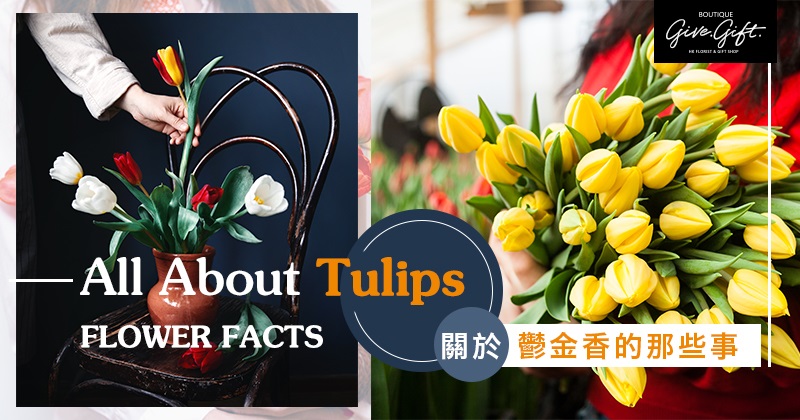
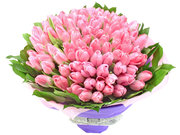

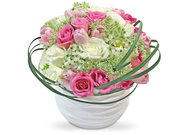



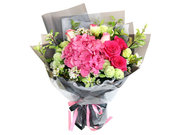

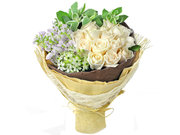
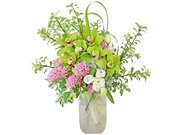
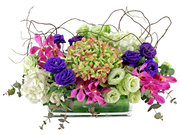
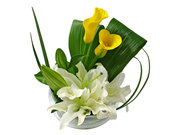
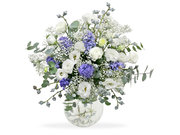
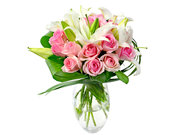

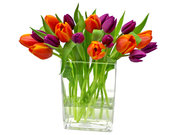
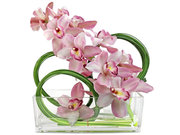
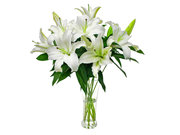
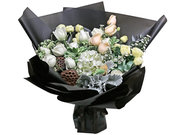

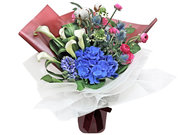


 Share
Share Tweet
Tweet +1
+1  Pin it
Pin it Post
Post  Weibo
Weibo Review
Review


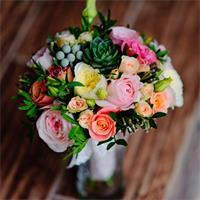



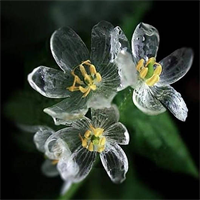
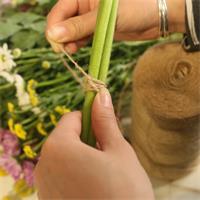











 Diwali Gifts
Diwali Gifts 
 ▶
▶